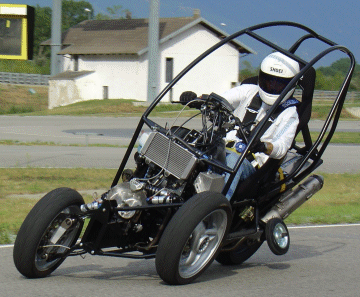-
 News
News -
 People
People -
 Facilities
Facilities -
 Research
Research -
 Active and regenerative shock absorbers
Active and regenerative shock absorbers -
 Active magnetic bearings
Active magnetic bearings -
 AI-based battery modeling and monitoring
AI-based battery modeling and monitoring -
 Autonomous driving and AI for automotive
Autonomous driving and AI for automotive -
 Electric and hybrid powertrains
Electric and hybrid powertrains -
 Electrodynamic bearings
Electrodynamic bearings -
 Mechatronic systems for mountain safety
Mechatronic systems for mountain safety -
 Rotordynamics
Rotordynamics -
 Vehicle dynamics and vehicle architectures
Vehicle dynamics and vehicle architectures -
 Vibration and motion control
Vibration and motion control
-
-
 Collaborations
Collaborations -
 Student Teams
Student Teams -
 Publications
Publications -
 Contact
Contact
Vehicle dynamics and vehicle architectures
Urban areas are more and more congested. The problem of traffic promotes light weight vehicles diffusion so different solutions to solve this problem appeared on the market. Many of these are three wheels tilting vehicles with two wheels on rear or front axle, or four wheels tilting vehicles. All these kind of vehicles can be actively controlled or simply driven like a motorcycle, in this latter case the typical dynamics of tilting motorbikes is combined to instability phenomenons involving the tilting degree of freedom. Most of the vehicles found in literature are projects at the prototypal stage. Deep studies about dynamics of these vehicles can hardly be found and also mathematical models are at a preliminary stage.

The complexity of the layout suggested to adopt a multibody approach. The SimMechanics tool in Matlab/Simulink or VI-Motorcycle environment resulted to be the most appropriate support being the commercially available codes for motorbikes or cars not prone to model such an unconventional vehicle. Field test were carried out and the experimental results were used to validate the models. The stability analysis in straight running, cornering capabilities, cornering maneuvers and vibrational phenomenons during steady state cornering have been investigated. The Mechatronics Lab has tested some existing tilting vehicles, an also designed, developed and tested on purpose a prototype of a three tilting wheels vehicle.
Application field of this research is the design of vehicles capable of covering all the different missions typical of a mid size car, including highway and city to city transportation, reducing emissions and fuel consumption keeping a competitive selling price. The need of small vehicle size with particular attention for safety, brings designers to adopt three wheels solutions. This allows to include cars and motorcycles advantages in one vehicle. For instance, it can maintain the typical scooters agility into the traffic but supplying to the driver a higher safety level, in particular traveling on rough roads where tires grip can be compromised by road unevenness.
